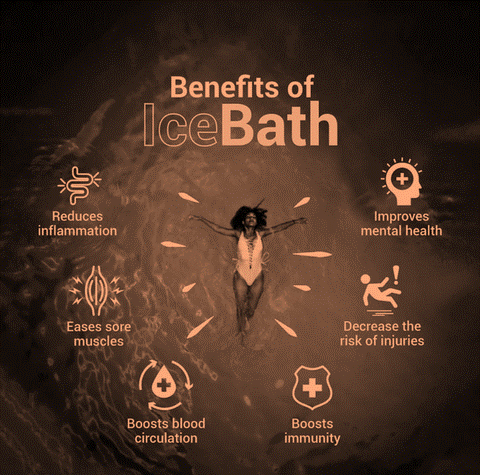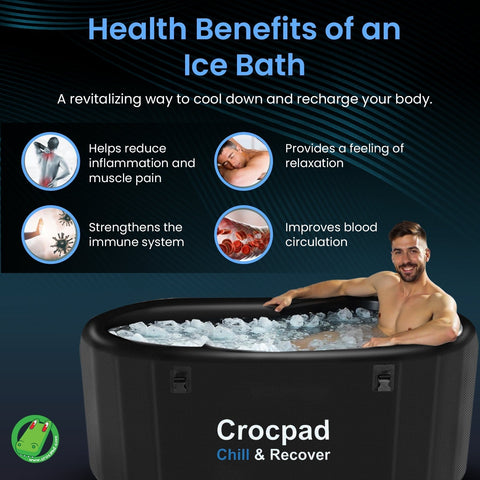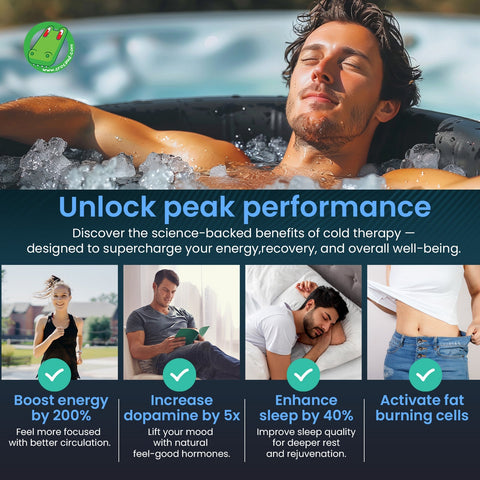For athletes, fitness enthusiasts, and anyone who regularly engages in intense physical activity, ice baths have long been considered a go-to recovery tool. Also known as cold water immersion (CWI) or cryotherapy, the practice typically involves submerging the body in cold water (between 50–59°F or 10–15°C) for about 10 to 15 minutes post-exercise.
While ice baths remain popular in athletic circles, ongoing research continues to evaluate just how effective they truly are.
What the Research Says
Ice baths have been used for decades to relieve sore muscles and speed up recovery. However, a 2017 study challenged this long-standing belief, suggesting that ice baths might not offer significant recovery benefits when compared to active recovery methods, such as light cycling.
Still, experts caution against dismissing ice baths altogether.
“The study does not prove 100 percent that there are no benefits to ice baths,” says Dr. A. Brion Gardner, an orthopedic surgeon. “It simply questions previously assumed outcomes like reduced muscle damage and improved recovery.”
Clinic director at Yorkville Sports Medicine Clinic, agrees, emphasizing that top athletes continue to rely on CWI for recovery. While research may be inconclusive, anecdotal support and real-world application still favor ice baths.
It's also important to note that the referenced study had a limited sample size—only nine young men—and further research is needed to draw definitive conclusions.
Potential Benefits of Ice Baths
Despite ongoing debates, many athletes and fitness experts point to several potential benefits of ice baths:
-
Muscle Relief
The cold immersion can alleviate muscle soreness and the burning sensation following a strenuous workout. -
Central Nervous System Support
Cold exposure may aid sleep, reduce fatigue, and improve mental clarity and physical readiness for future workouts. -
Inflammation Reduction
Lowering body temperature post-exercise is believed to help reduce inflammation and support faster recovery. -
Heat Regulation
Pre-cooling the body before an endurance event in hot and humid conditions may enhance performance. -
Vagus Nerve Stimulation
Regular cold exposure can help train the vagus nerve, which supports stress regulation through the parasympathetic nervous system.
Risks and Side Effects
While many find ice baths invigorating, they aren't without risks:
-
Cardiovascular Strain: People with heart conditions or high blood pressure should avoid ice baths due to the vasoconstriction and drop in core temperature, which could trigger cardiac complications.
-
Hypothermia: Prolonged exposure can lead to dangerously low body temperatures.
-
Diabetes: Individuals with type 1 or type 2 diabetes may have difficulty regulating body temperature in extreme conditions and should consult a doctor first.
How to Take an Ice Bath Safely
If you’re ready to try an ice bath, follow these best practices to ensure safety and effectiveness:
-
Temperature: Keep water between 50–59°F (10–15°C).
-
Duration: Limit immersion to 10–15 minutes.
-
Body Exposure: Aim to submerge the whole body for maximum benefit. Beginners may start with just the feet and lower legs.
-
Timing: Enter the bath as soon as possible post-workout for optimal effect.
-
At-Home Setup: Use a thermometer to monitor water temperature. Adjust with ice or warm water as needed.
Alternatives to Traditional Ice Baths
If you’re not ready to jump into a tub of ice, other methods can offer similar recovery benefits:
-
Hunter’s Reaction (Lewis Reaction): Apply ice for 10 minutes, remove for 10 minutes, and repeat. This cycle promotes effective physiological recovery without full-body immersion.
-
Cryotherapy Chambers: These office-based cold therapy sessions expose the body to extremely cold temperatures for short periods, though they come at a higher cost—usually $45 to $100 per session.
Final Thoughts
Despite some mixed research findings, ice baths remain a widely used recovery method, particularly among athletes and active individuals. While long-term daily use may not be ideal, occasional cold water immersion following intense physical activity can offer short-term benefits in muscle relief, inflammation reduction, and performance recovery.
If you choose to incorporate ice baths recovery routine, always follow proper safety guidelines—and consult a healthcare provider if you have any preexisting conditions.



